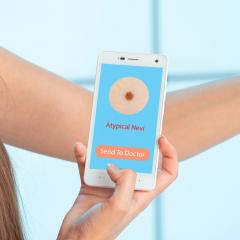Centaine Snoswell, The University of Queensland; Anthony Smith, The University of Queensland; Emma E Thomas, The University of Queensland; Helen Haydon, The University of Queensland, and Liam Caffery, The University of Queensland
The COVID-19 pandemic has resulted in rapid changes to the way Australians access health care. We’re now using telehealth more than ever.
Last week’s federal budget confirmed a six-month extension of Medicare subsidies for telehealth consultations, worth A$2.4 billion. It also included A$18.6 million for the preparation of permanent telehealth infrastructure beyond March 31 next year.
This goes some way to recognising telehealth is not only an important tool in our pandemic response — it’s much needed in our health system.
To fully realise the potential of telehealth, we need to recognise it’s more than just appointments via phone or videoconference.
COVID-19: a game changer for telehealth in Australia
In March, telehealth services were funded for all Australians under the Medicare Benefits Schedule (MBS).
The package covered phone and videoconsultations with GPs, specialists, nurse practitioners and allied health professionals (like physiotherapists, social workers and psychologists). This complemented existing MBS funding for medical videoconsultations for people in rural communities.
We saw a rapid uptake — more than 35% of MBS-funded consultations were conducted via telehealth in April 2020.
Read more: Telehealth in lockdown meant 7 million fewer chances to transmit the coronavirus
Centaine Snoswell, Research Fellow Health Economics, The University of Queensland; Anthony Smith, Professor of Telehealth; and Director of the Centre for Online Health, The University of Queensland; Emma E Thomas, Research Fellow & Telehealth Consultant, The University of Queensland; Helen Haydon, Research Fellow, The University of Queensland, and Liam Caffery, Associate Professor in Telehealth and Director of Telehealth Technology, Centre for Online Health, The University of Queensland
This article is republished from The Conversation under a Creative Commons license. Read the original article.



